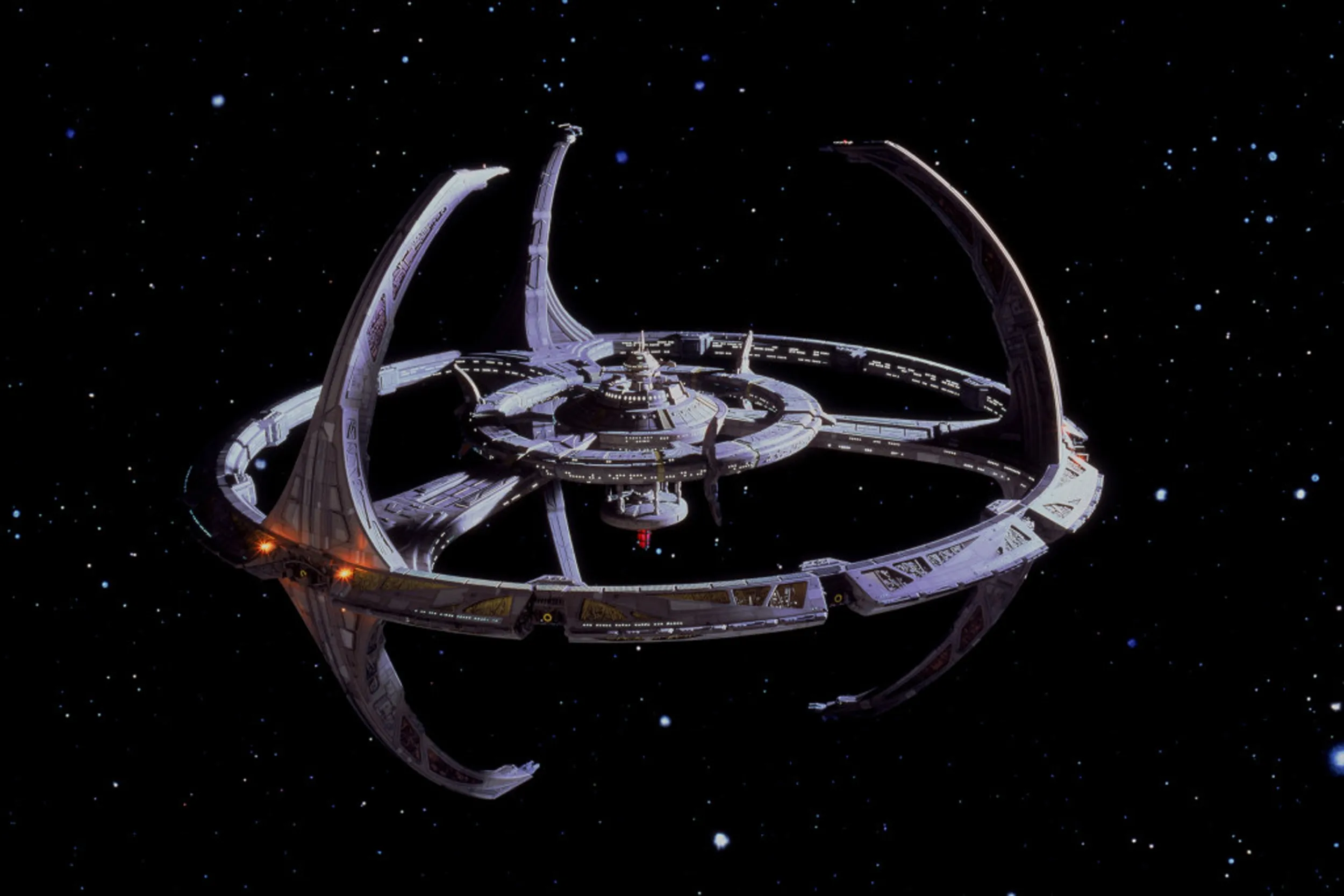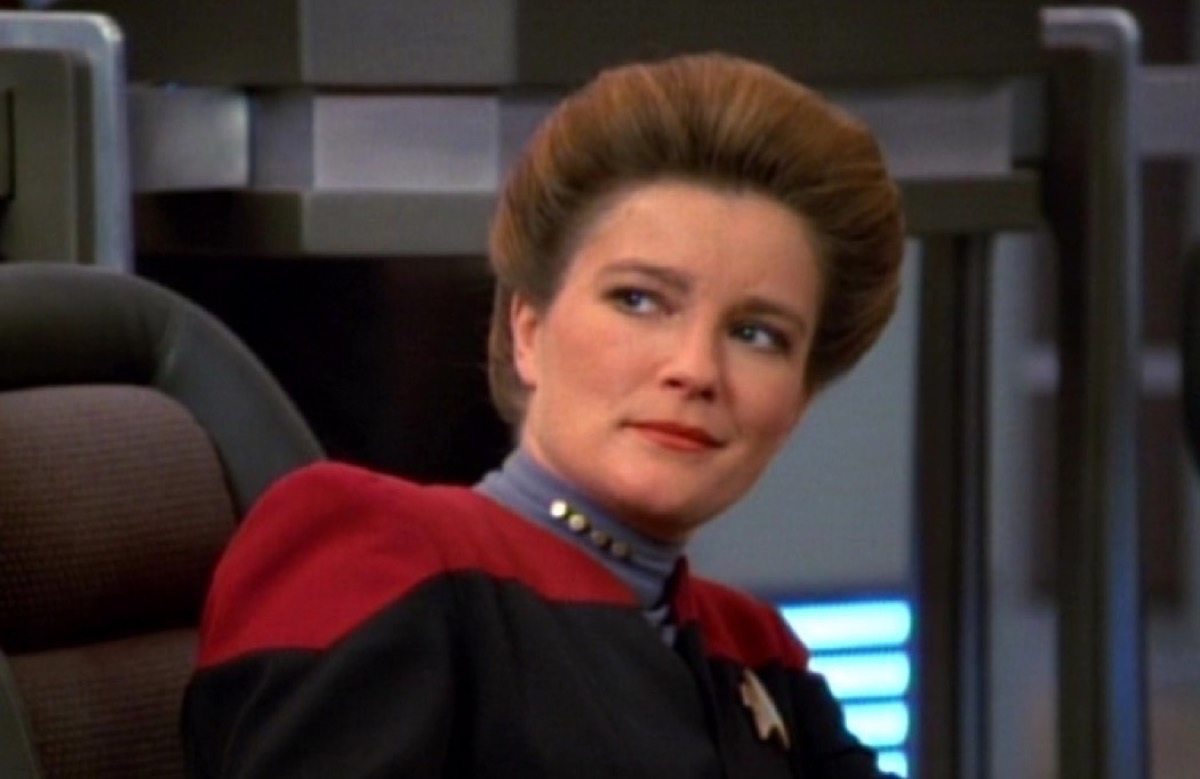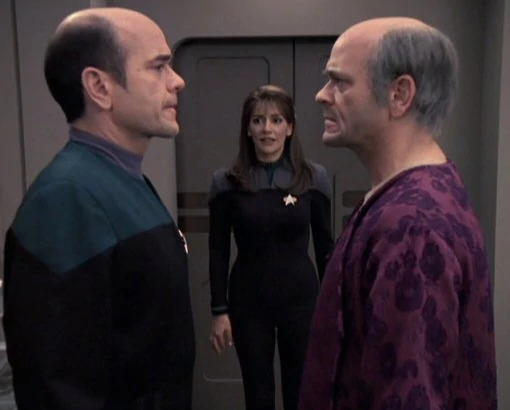The third animated Star Trek series, Star Trek: Prodigy, has arrived! The third episode of the new series, which is aimed to be palatable and appealing to younger audiences, is available for streaming on Paramount+ beginning today, Thursday, November 11th, 2021 (with the episode also airing on Nickelodeon, if that's where you prefer to watch your animated Sci-Fi).
![]()
Janeway & Zero. Photo: Nickelodeon/Paramount+
With some outstanding animation and a well-considered philosophical position that integrates well with the current state of the Trek universe, Trek fans of all ages will want to consider checking out Prodigy.
The Second Renaissance
After Star Trek: The Original Series was cancelled in 1969 after just three seasons, the television airwaves were devastatingly devoid of new Trek adventures for nearly two decades.
Fortunately, in 1987, Star Trek: The Next Generation arrived. Thanks to the success of TNG, it was followed by Star Trek: Deep Space Nine, which began in 1993. And in 1995, the third pillar of Trek's second Renaissance arrived: Star Trek: Voyager.
For many, this is considered to be a golden age of Trek, and with good reason: all three shows remain examples of incredibly affecting and intelligent serialized television storytelling. But it's important to note that one of the reasons they each succeed so well is that they each take a markedly different approach to their thematic subject matter.
TNG represents the flagship series, and shows humanity as we could be at our best. Captain Picard (Patrick Stewart) serves as the model of a near-perfect leader, being both capable and conscientious while remaining commanding and uncompromising. The D is a beacon of what humanity could accomplish if we could put aside petty concerns and work together for the good of everyone.

Sit & spin: themes on-board DS9 reflected the movement of the station.
Meanwhile, under the command of the deeply emotionally wounded Commander Sisko (Avery Brooks), DS9 took the space station's stationary spinning literally, and allowed for deep inner exploration of each member of the crew. This also served to turn the philosophy of the Federation inwards, questioning how it might be used to navigate difficult moral quandaries, such as those that arose from the ongoing (and increasingly complicated) conflict between the Bajorans and the Cardassians.
And VOY offered a different perspective on Starfleet once again, taking Captain Janeway (Kate Mulgrew), who had a deep personal commitment to the Federation's philosophies, and seeing what happened when she and her crew were tossed over to the Delta Quadrant, a location seventy years removed from Earth.
VOY/Janeway
In many ways, Prodigy is a direct sequel to VOY. This can be seen in the setting (back to the Delta Quadrant) and even the aliens we meet (hint: think of the recent experience Robert Duncan McNeill's Tom Paris had on-board the Cerritos).
Obviously, the presence of Hologram Janeway goes a long way towards explaining this connection… but the reasoning for using Captain Janeway for this role (instead of Picard, the Sisko, or even Sulu) can be seen throughout VOY.

When Voyager was stranded in the Delta Quadrant, Janeway turned to the philosophies and guidelines of the Federation in order to guide her crew home. Time and time again, we saw their Starfleet beliefs challenged by the wild and untamed elements of the Delta Quadrant, and time and again, we saw Janeway prevail.
This is clearly reflected by the themes of Prodigy, albeit through a mirror: instead of relying on the Federation's philosophies in order to return to their home, there's a question of whether or not the "cadets" can make their way to the (literal and metaphorical) territory of the Federation when they originate from outside it.
![]()
First Contact with Starfleet. Photo: Nickelodeon/Paramount+
Again, this calls to mind several subplots that took place over the course of VOY's seven-season run. We repeatedly saw Janeway integrate individuals from outside of Starfleet – sometimes even individuals who had never before heard of Starfleet – into the fold.
"Cadets"
Does Hologram Janeway actually believe the crew of children who have laid claim to the Protostar are Starfleet Cadets? It likely doesn't matter, as one of Janeway's defining character traits is to bring outsiders into Starfleet.
Her propensity to bring more people into Starfleet can be glimpsed very early on in VOY, with one of the first examples being Neelix (Ethan Philips), the Talaxian who the crew met early on in the series. Neelix went on to became the ship's Morale Officer and cooked for the crew for most of their journey to Earth.

There have been some complicated developments regarding holograms in Trek over the years...
We saw it again later on in the series when Seven of Nine (Jeri Ryan), who had been assimilated into the Borg, was integrated into VOY's crew. Furthermore, thanks to Picard, we can see how this decision – considered inadvisable at the time by Janeway's second-in-command, Chakotay (Robert Beltran) – continues to have very far-reaching consequences in the larger Trek narrative. It's a powerful ongoing demonstration of how one person's kindness towards another can echo across the generations.
Janeway even went to great lengths to allow The Doctor (Robert Picardo) to self-actualize, listening and responding to his arguments about his own sentience and eventually permitting him to become a full-fledged member of VOY's crew. Significantly, it seems hard to argue that there is not a straight line between the extensive development of The Doctor's hologram matrix and the presence of Hologram Janeway on-board the Protostar.
First Contact
But just as Janeway is making first contact with these "cadets," it's clear Prodigy has making first contact with young viewers in mind, as well.
Not only does Hologram Janeway serve as an excellent expositional tool, allowing the young cadets to serve as audience surrogates and ask any pressing questions about the backstory and set-up, but each episode includes introductions to the "classic genre elements" that make up a Trek story.
![]()
Introducing the tricorder. Photo: Nickelodeon/Paramount+
For example, in the second episode, "Starstruck," Janeway explains to Rok-Tahk (Rylee Alazraqui) and Jankom Pog (Jason Mantazoukas) how the replicator functions. This is a basic element of the larger Trek universe (and one that I consider to be foundational)… and Prodigy manages to explain how it works to the uninitiated audience in a natural and believable manner.
Another example of this strategy can be found in the third episode, "Dreamcatcher," which opens with Dal (Brett Gray) recording his first Captain's Log. If you weren't familiar with the long-standing Trek convention of opening with a voice-over log before this episode, you'll better understand why you open with Picard or Burnham's voice when you're watching TNG or Discovery when you catch up with those shows later on.
Prodigy's Potential
All of these heady concerns are well and good, but an important question remains for an animated show geared at younger audiences: is it enjoyable to watch?
The answer is a resounding yes. In addition to the aforementioned Protostar crewmembers, there is also Zero (Angus Imrie), the currently antagonistic Gwynala (Ella Purnell), and the irresistibly adorable blob, Murf (the always-incredible Dee Bradley Baker). Each of the cadets are interesting and engaging characters. They will quickly either make you laugh or elicit sympathy (or more likely, both). Meanwhile, John Noble and Jimmi Simpson serve as effective antagonists.
![]()
The Protostar visits the Lower Decks theme song. Photo: Nickelodeon/Paramount+
The show looks gorgeous, with fantastic space-bound settings, incredible color, and a ship that almost rivals the Cerritos in terms of awesomeness (I said almost – I don't think the Protostar has a Cetacean Ops). And speaking of Lower Decks, just like that animated series, Prodigy is committed to bringing in as much of the larger Trek lore as possible, with plenty of references to everything from Trek prose novels to deep cuts from episodes of TOS crammed into the first few episodes.
Prodigy also sounds amazing: with a theme by Michael Giacchino and a series score composed by Nami Melumad, the soundtrack is another solid sonic entry into Trek's musical parthenon.
Although it's clear the Protostar's journey is only in its most nascent stages – we've yet to see how promised guest stars like Beltran, Jason Alexander, and Daveed Diggs will play into this season's story – the animated series is already living up to its title.
Fortunately, a second season of Prodigy has already been confirmed, so we can look forward to getting the chance to see this charismatic crew fully fleshed out as the series continues.
The Third Renaissance
Are we entering a Third Renaissance for Trek? It certainly looks that way. Each of the current, ongoing shows – Disco, Picard, Lower Decks, Prodigy, and soon, Strange New Worlds – occupies its own distinct corner of the Trek universe. Furthermore, like the three shows that served as the pillars of Trek's Second Renaissance, each of these new shows approaches the thematic concerns at the heart of the franchise from a different perspective.

Kirk & Spock; Mariner & Boimler; Rok-Tahk & Murf. Photo Cr: Nickelodeon/Paramount+
For some, this may mean that certain shows are far more appealing than others. But the best part about Trek's Third Renaissance is that there seems to be no threat of any single approach becoming the dominant storytelling strategy: the franchise seems committed to the philosophy of infinite diversity in infinite combinations.
For that reason, Trek's future is looking bright.
New episodes of Star Trek: Prodigy air on Nickelodeon and are made available for streaming on Paramount+ on Thursdays.





No comments:
Post a Comment